Family Alcedinidae Scientific name Dacelo Phylum Chordata | Subfamily Halcyoninae Higher classification Tree kingfisher Rank Genus | |
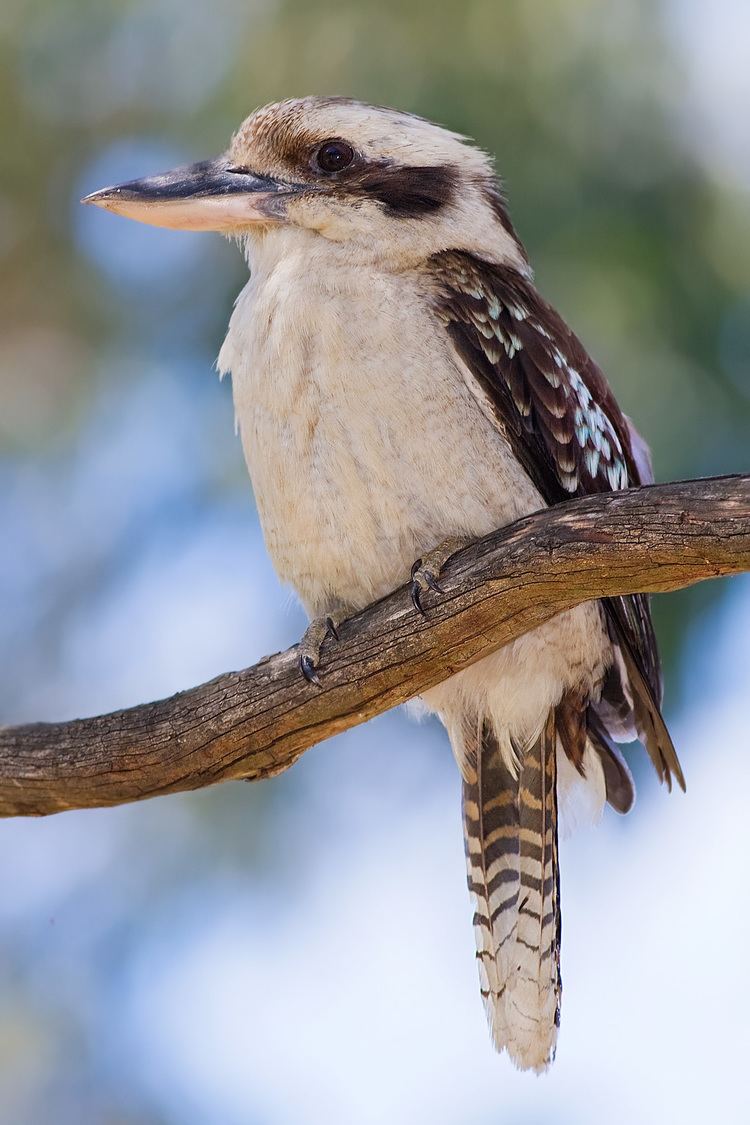 | ||
Lower classifications Laughing kookaburra, Blue‑winged kookaburra, Spangled kookaburra, Rufous‑bellied kookaburra | ||
Crikey the kookaburra s call
Kookaburras are terrestrial tree kingfishers of the genus Dacelo native to Australia and New Guinea, which grow to between 28–42 cm (11–17 in) in length. The name is a loanword from Wiradjuri guuguubarra, onomatopoeic of its call. The single member of the genus Clytoceyx is commonly referred to as the shovel-billed kookaburra.
Contents
- Crikey the kookaburra s call
- Kookaburra tug of war failed breakup attempt
- Taxonomy
- Classification and species
- Behaviour
- Conservation
- In culture
- Music
- Postage stamps
- Coins
- Yacht
- Hockey
- References
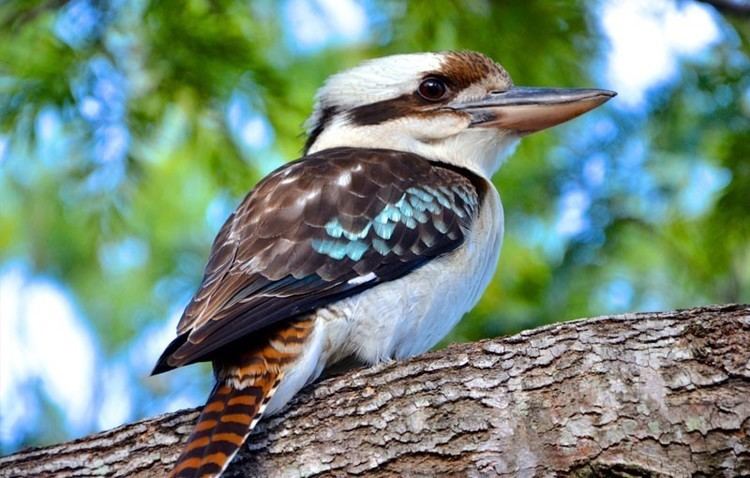
The kookaburra's loud call sounds like echoing human laughter. They are found in habitats ranging from humid forest to arid savanna, as well as in suburban areas with tall trees or near running water. Even though they belong to the larger group known as "kingfishers", kookaburras are not closely associated with water.
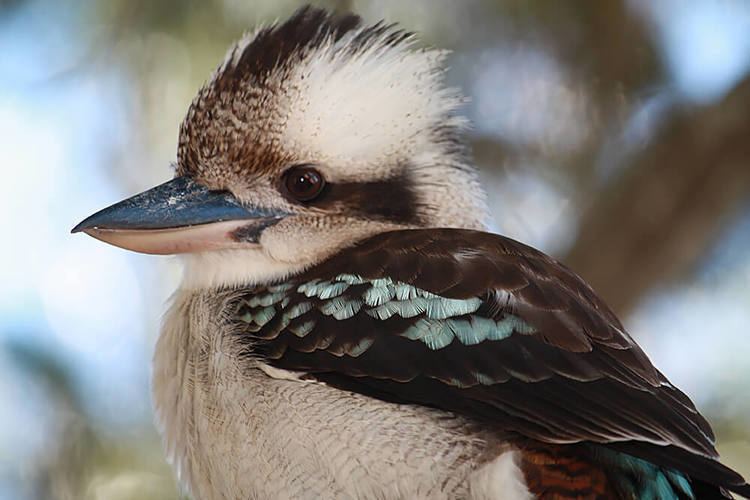
Kookaburra tug of war failed breakup attempt
Taxonomy
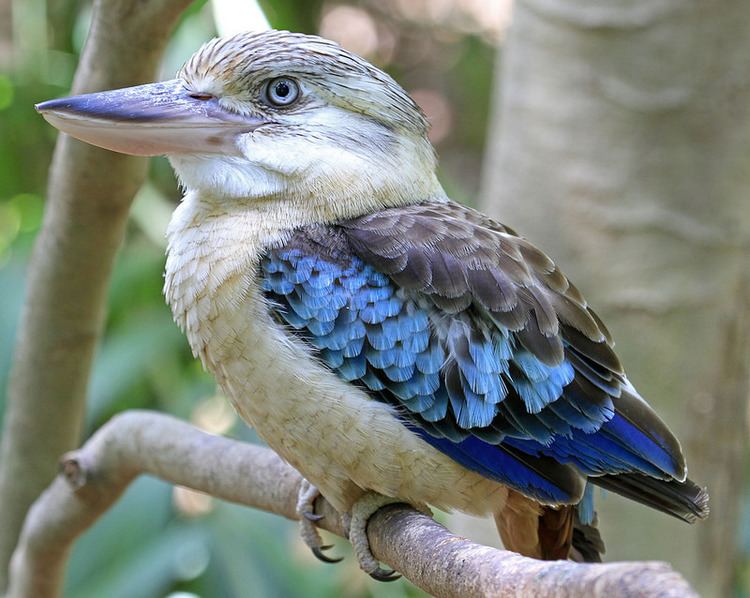
The genus Dacelo was introduced by the English zoologist William Elford Leach in 1815. The name Dacelo is an anagram of Alcedo, the Latin word for a kingfisher.
Classification and species
Four species of kookaburra can be found in Australia, New Guinea, and the Aru Islands.
Kookaburras are sexually dimorphic. This is noticeable in the blue-winged and the rufous-bellied, where males have blue tails and females have reddish-brown tails.
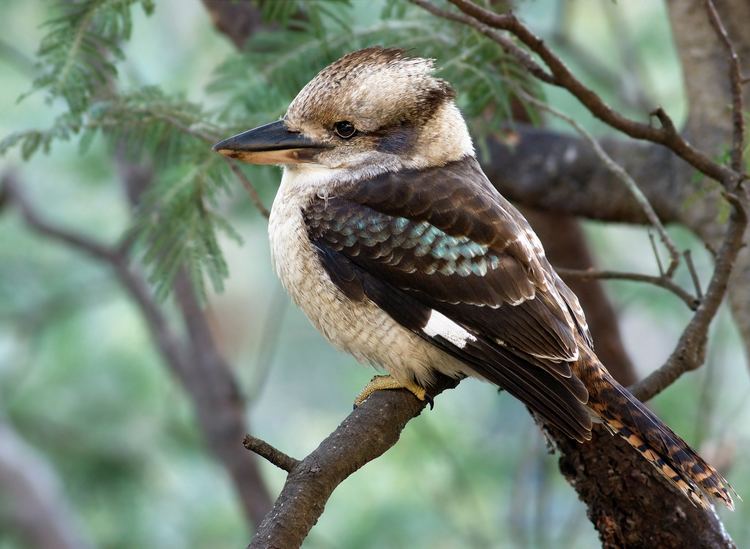
Behaviour
Kookaburras are almost exclusively carnivorous, eating mice, snakes, insects, small reptiles, and the young of other birds; they have also been known to take goldfish from garden ponds. In zoos they are usually fed food for birds of prey.
The most social birds will accept handouts and will take meat from barbecues. It is generally not advised to feed kookaburras ground beef or pet food as these do not include enough calcium and roughage.
They are territorial, except for the rufous-bellied, which often live with their young from the previous season. They often sing as a chorus to mark their territory.
Conservation
All kookaburra species are listed as Least Concern. Australian law protects native birds including kookaburras.
In culture
Olly the Kookaburra was one of the three mascots chosen for the 2000 Summer Olympics in Sydney. The other mascots were Millie the Echidna and Syd the Platypus.
The distinctive sound of the laughing kookaburra's call is used in filmmaking and television productions, as well as certain Disney theme park attractions, regardless of African, Asian and South American jungle settings. Kookaburras have also appeared in video games (Lineage II, Battletoads, and World of Warcraft) and at least in one short story (Barry Wood's Nowhere to Go).
In William Arden's 1969 book, The Mystery of the Laughing Shadow, (one of 'The Three Investigators' series for young readers), the laughing kookaburra is integral to the plot.
The children's television series Splatalot! includes an Australian character called "Kookaburra" (or "Kook"), whose costume includes decorative wings that recall the bird's plumage, and who is noted for his distinctive high-pitched laugh.
Music
Postage stamps
Coins
An Australian coin known as the Silver Kookaburra minted annually since 1990.
Yacht
The Australian 12 metre yacht Kookaburra III lost the America's Cup in 1987.
Hockey
The Australian Men's Hockey team is named after the kookaburra. They are currently (as of 2014) world champions in field hockey.
